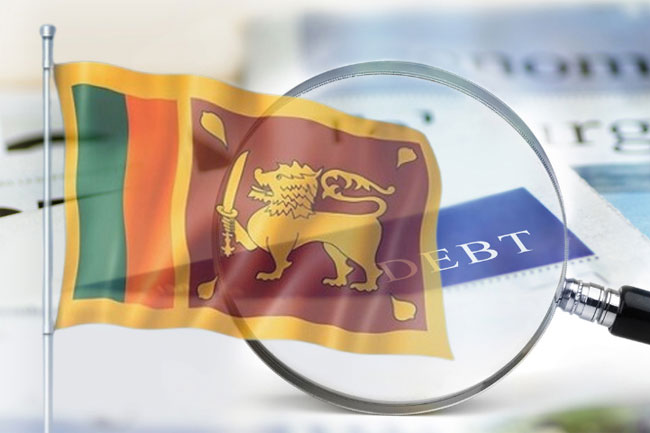The Sri Lankan rupee, which shed nearly 80 percent of its value, has sent the rupee value of the foreign currency-denominated debt of the government spiralling by significant proportions, even with no fresh borrowings, as the rupee weakness is sending ripple effects across markets.
According to the outstanding public debt data available through April this year, the cumulative debt, comprising both domestic and foreign, surged to Rs.23,310.1 billion, from Rs.17,589.4 billion at the end of 2021.
While the domestic component of the total debt rose by Rs.1,345.1 billion in the four months to Rs.12,442.3 billion, the debt held by non-residents added the biggest jolt to the total outstanding debt, after the rupee was let go on March 7 in a botched effort to float the currency after running out of all the remaining usable reserves.
The domestic debt component also consists of Sri Lanka Development Bonds and International Sovereign Bonds held by the resident Sri Lankans and the non-resident holdings of the two types of instruments are classified under foreign debt.
The total foreign debt stock added a massive Rs.4,375.6 billion in the four months through April, coming entirely from the translation effects of the foreign debt component at the weaker rupee.
As a result, the total foreign debt stock, which was at Rs.6,492.2 billion when the rupee was fixed at Rs.203.0 to a dollar, swelled to Rs.10,867.8 billion in just four months through the end of April.
This is while the government turned a net repayer of the foreign debt by a rupee equivalent of Rs.44.4 billion from January through June 2022, the data available for the six months showed. In the same period in 2021, the government was a net borrower of foreign loans, with a rupee equivalent of Rs.21.2 billion.
In the same period, the government raised Rs.947.1 billion from domestic sources such as Treasury bills and bonds, compared to the Rs.759.0 billion raised in the corresponding period last year, to finance its bloated budget deficit.
This reflects that the government leaned too heavily on the Central Bank financing of the deficit through money printing, which was brought under some control from April onwards, after the rates were raised by an unprecedented 700 basis points, drawing private money into the banking system, helping the Central Bank to raise the weekly financing requirement from the market to a larger extent.

